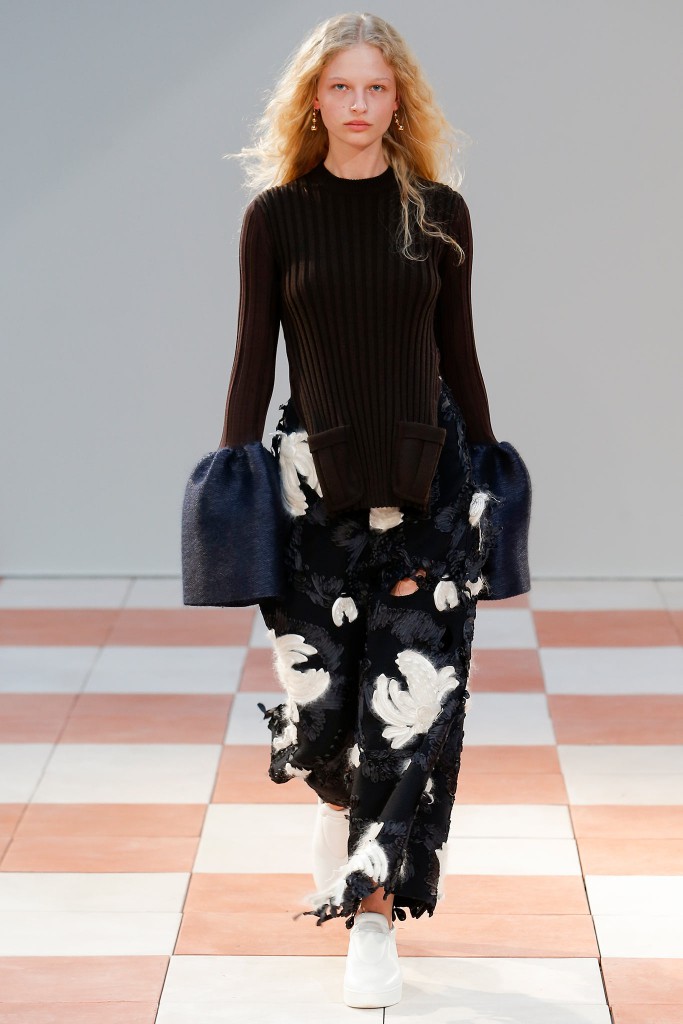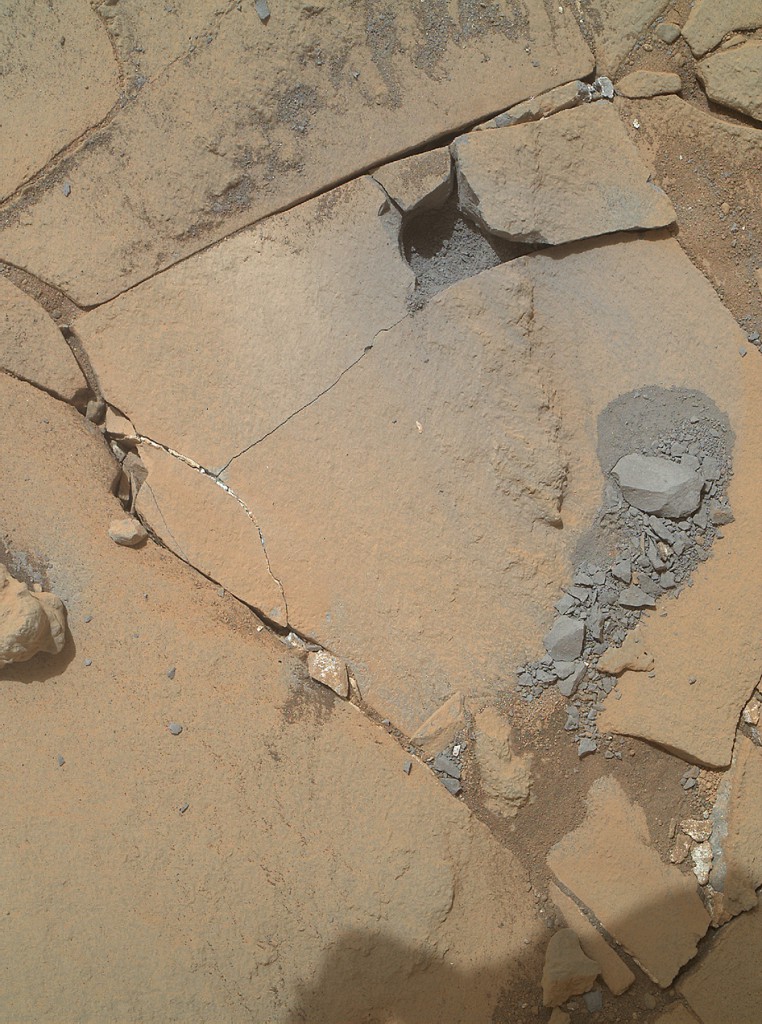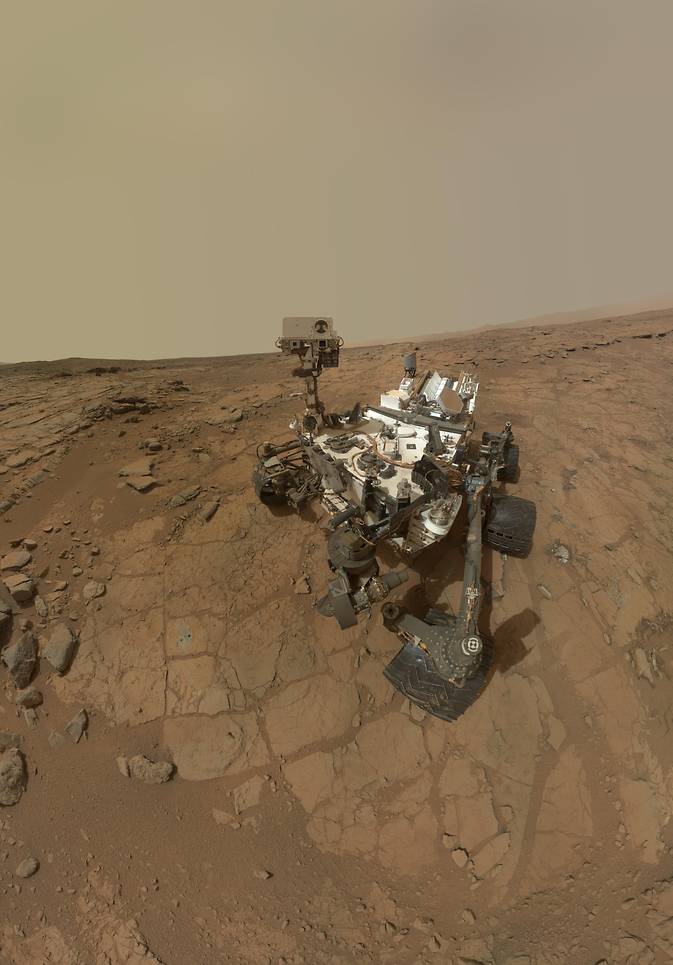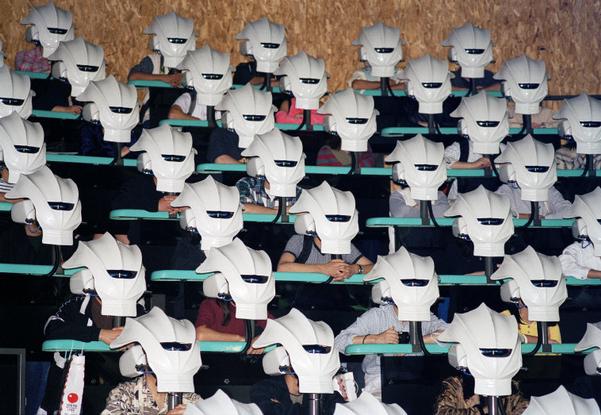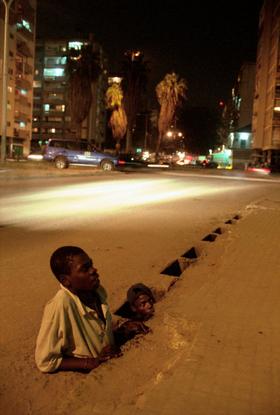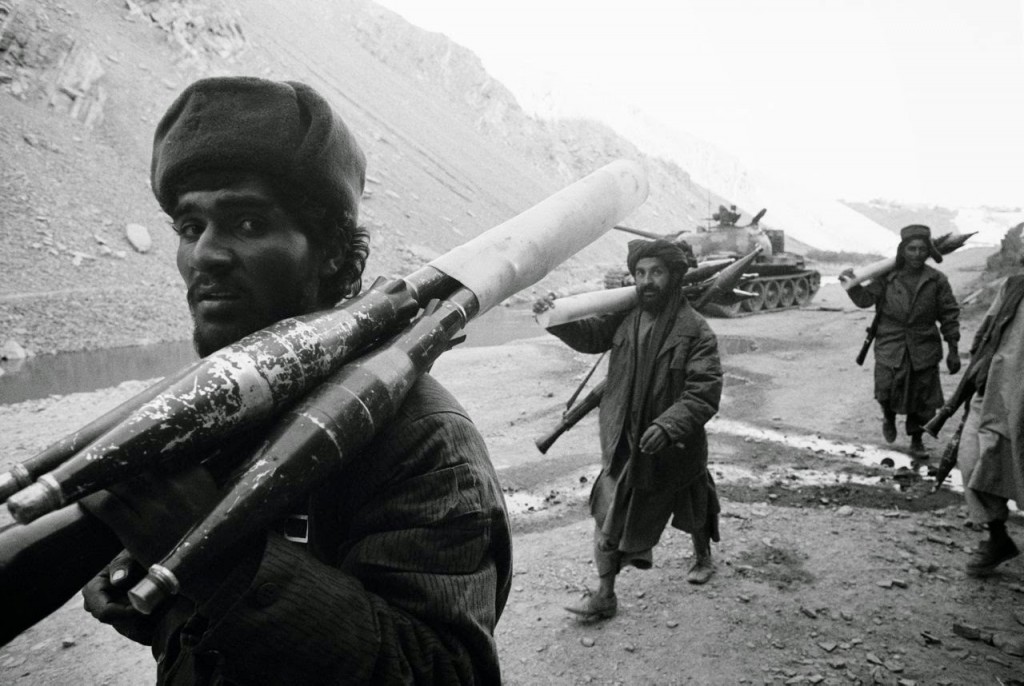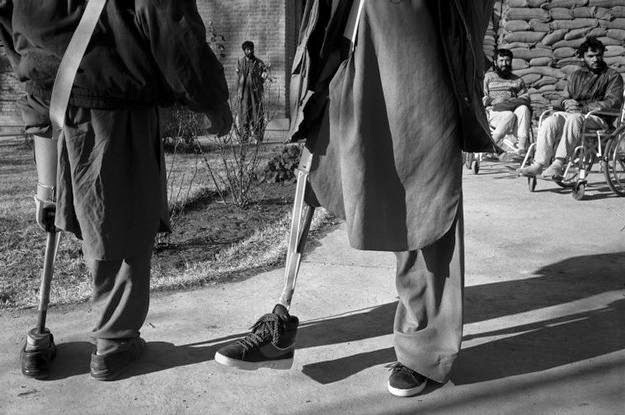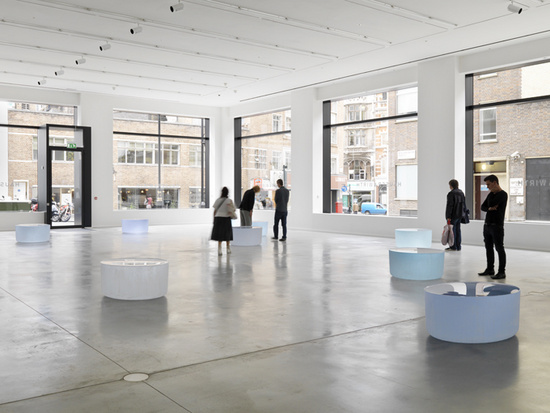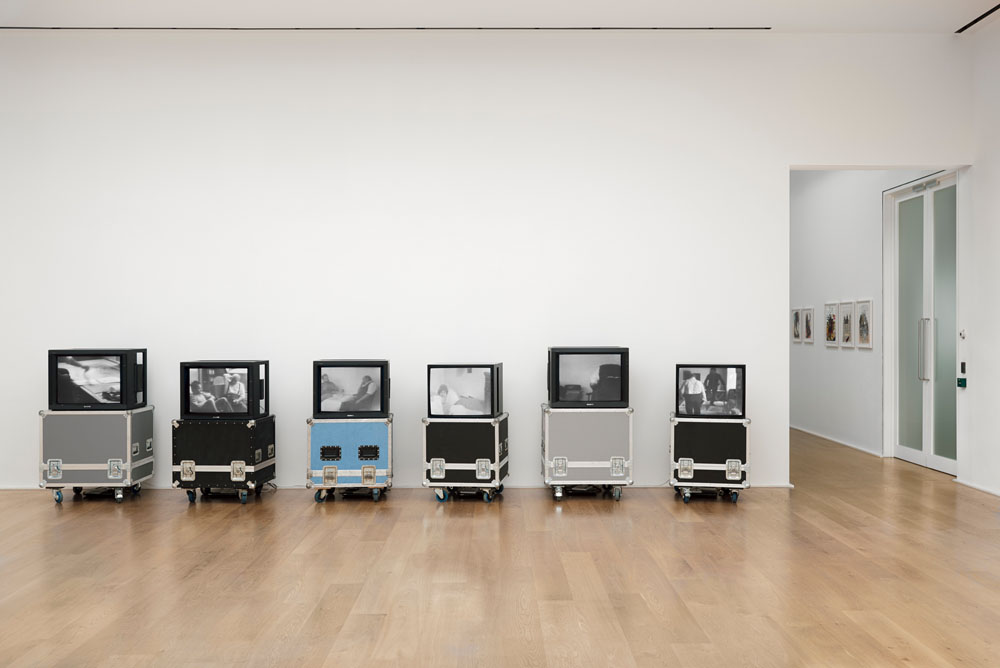Phoebe Philo for Céline, Fall 2015, Paris, 2015
There is allegedly no such thing as coincidence, so presumably there’s some meaning to the fact that Phoebe Philo was showing her new Céline collection on International Women’s Day, even though she conceded that she was very conscious of walking a line between the responsibility that has been bestowed upon her as the Designer Who Knows What Women Want and the borderline irresponsibility of pleasing herself. A challenging balancing act, for sure, except that in addressing her own wants and needs, Philo managed to find a new space for Céline.
“The best part of this job is finding out more about myself,” she said after the show. “It gets deeper and deeper into the roots.” And where those roots went deep today was into a new sense of playfulness. Big, fluffy pom-poms? Otters and foxes and deer as literal animal prints? Duvet coats? All that and more showed a new side of Céline. “Dressed-up-ness,” Philo called it. “I was never in the headspace to approach it before. I find glamour and sexuality awkward. When do they feel authentic? What’s real, what’s not?” Big questions. And Philo addressed them with a collection that, by her own admission, was a little Latin American. “The blood is hotter,” she said. “The approach is more dramatic.”
That was certainly helped by Brazilian musician Caetano Veloso crooning ardently on the soundtrack, and a set that had the flavor of a villa in Rio, with wood-grain pillars and terra-cotta tiles. They cracked as the models walked on them. Why was that erotic? And that was before knits that defined the body, and coats that were fervently trimmed in fox, and shoes whose heels were bejeweled, and a surreal Madonna nod with a knit bustier. And holsters! “There was almost too much going on,” Philo conceded. “That’s why there were other times when it was more gritty, more Northern soul, less passionate.”
Maybe by “less passionate” she meant plain knit dresses worn with high-tops (“Keeping everyone grounded,” she said) but they were a respite in a collection that otherwise shunted boldly into graphic new territory. This wasn’t the first collection this season that has exalted the artisanal work of the hand, but here it had a particularly striking naïveté: boiled-wool pieces with embroidery smashed up, broken down, as well as trims of fur and feather. Those animal prints were hand-drawings based on the illustrations in children’s books. Then there was the fox fur. “Loaded, vulgar, intense,” said Philo. “I’m trying to propose that we women go for it.”
How many times has it been said that design is autobiography? This collection was a testament to that truth: a freer Philo, a Philo in search of fun. Yes, the duvet coats spoke of the protection that was an early Céline signature, but here the sleeves buttoned off and some of them were peeled back, suggesting imminent breakout.
http://www.style.com/fashion-shows/fall-2015-ready-to-wear/celine
